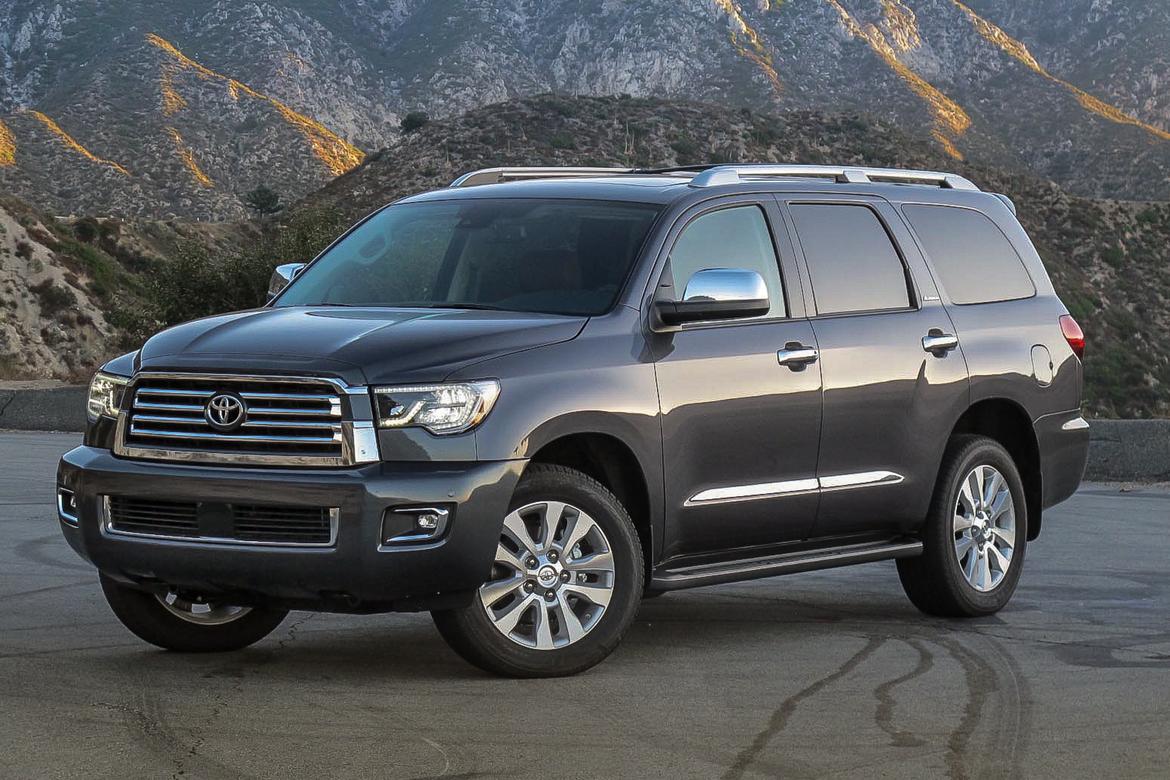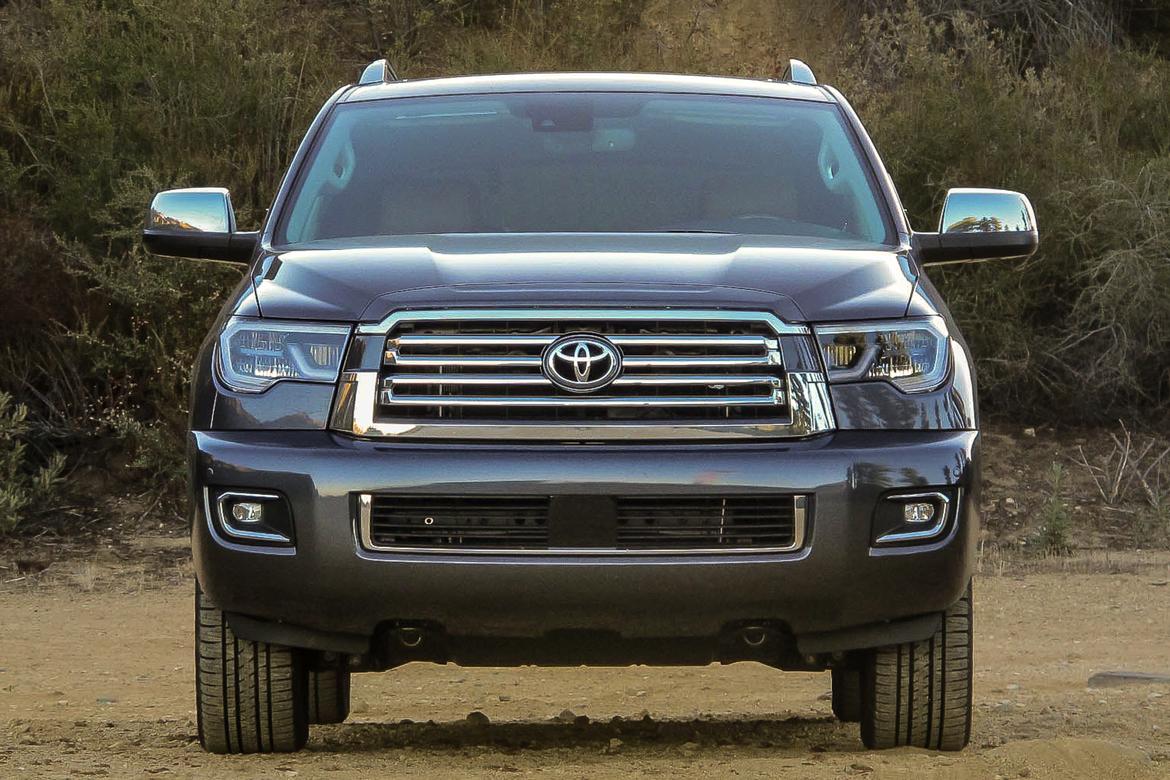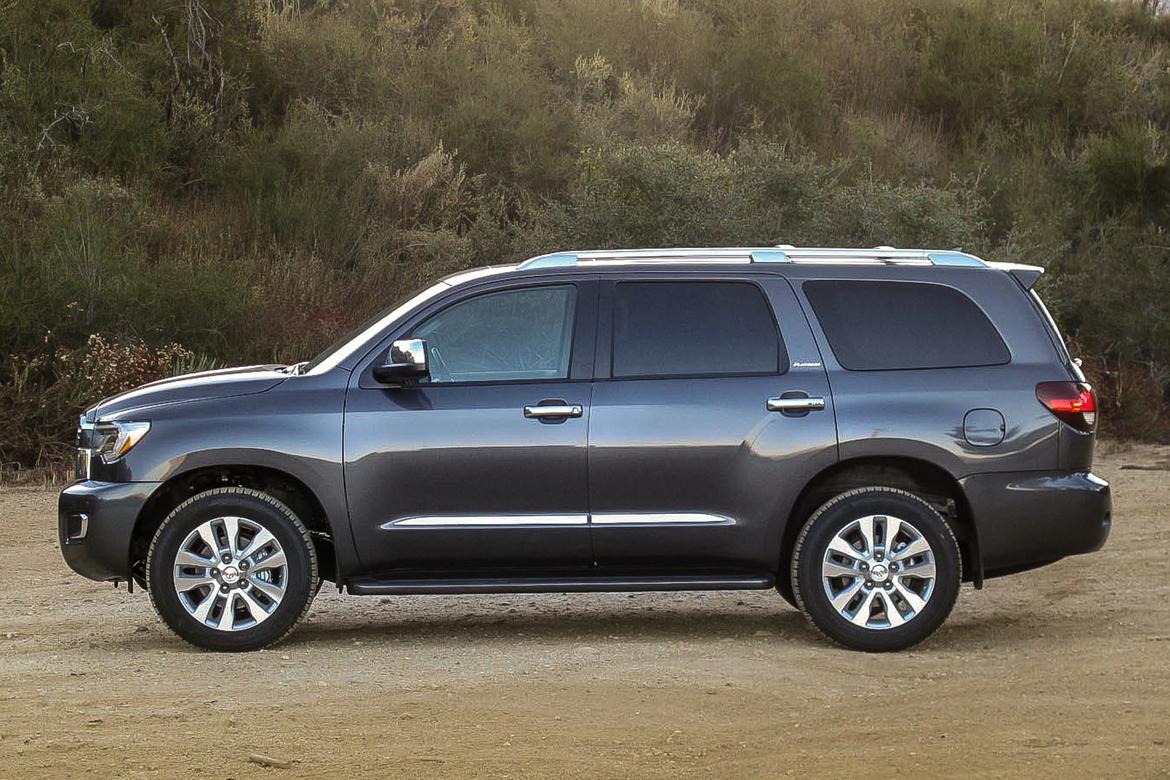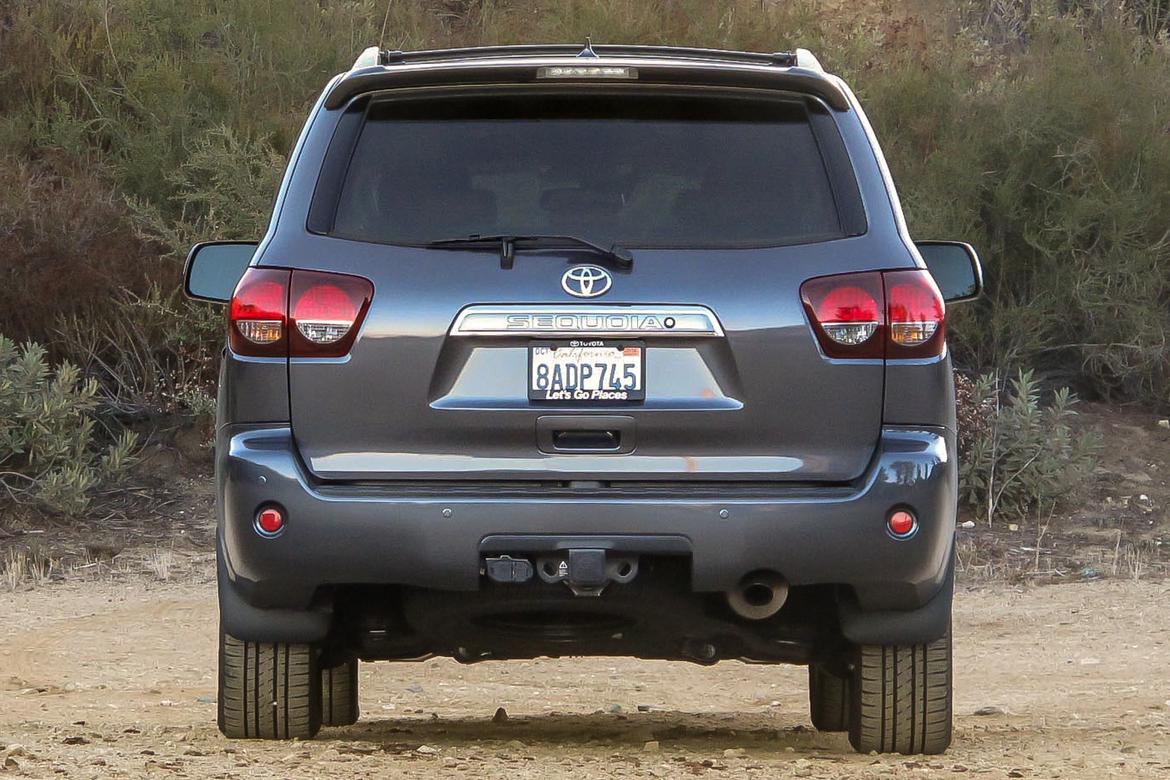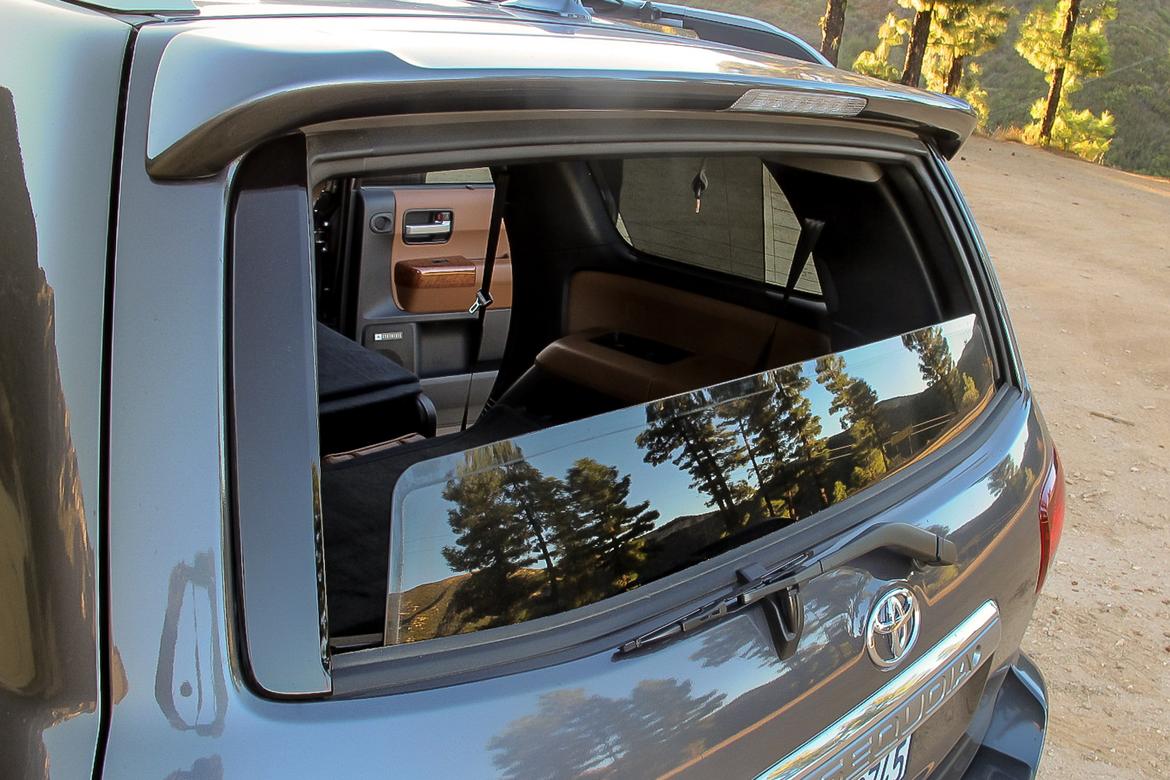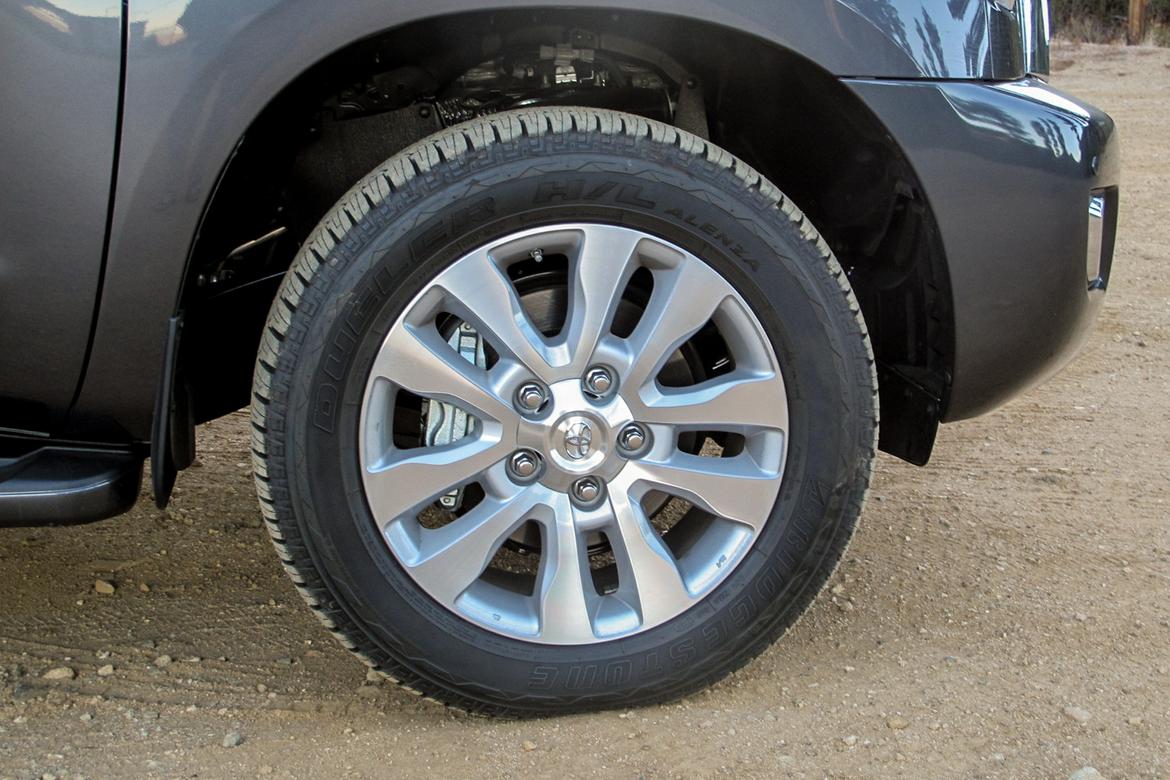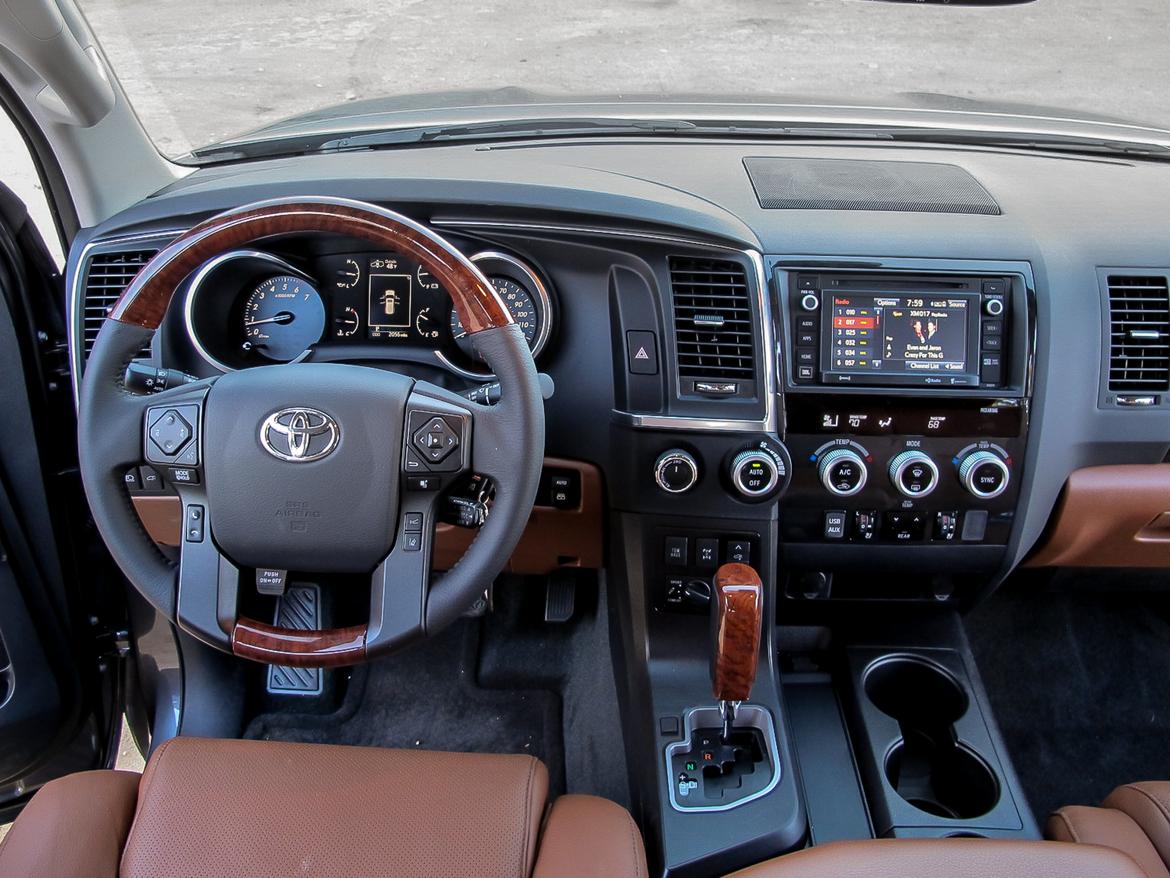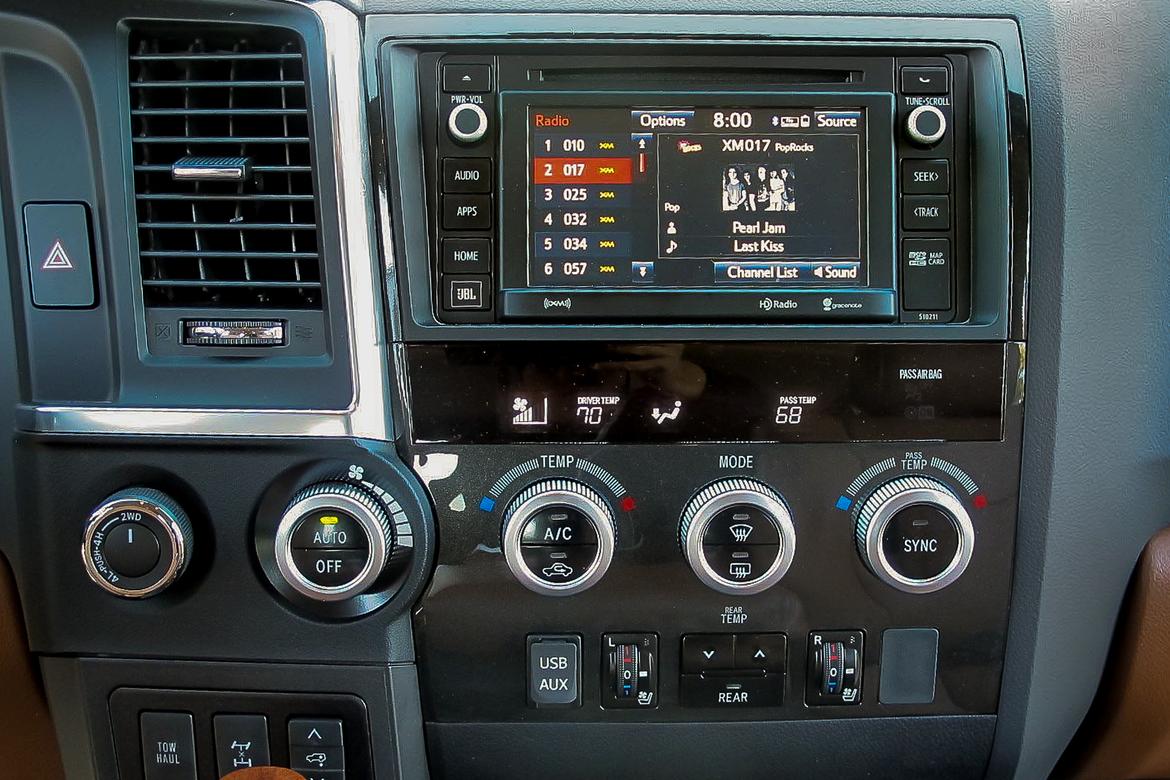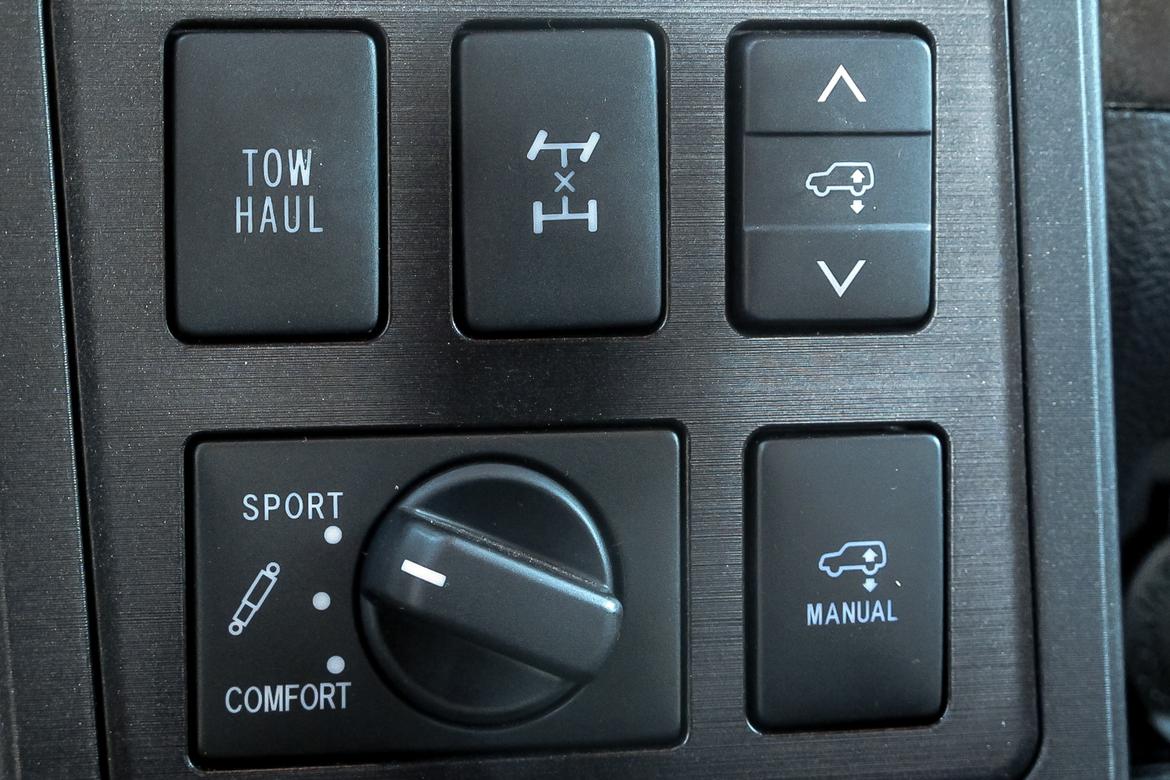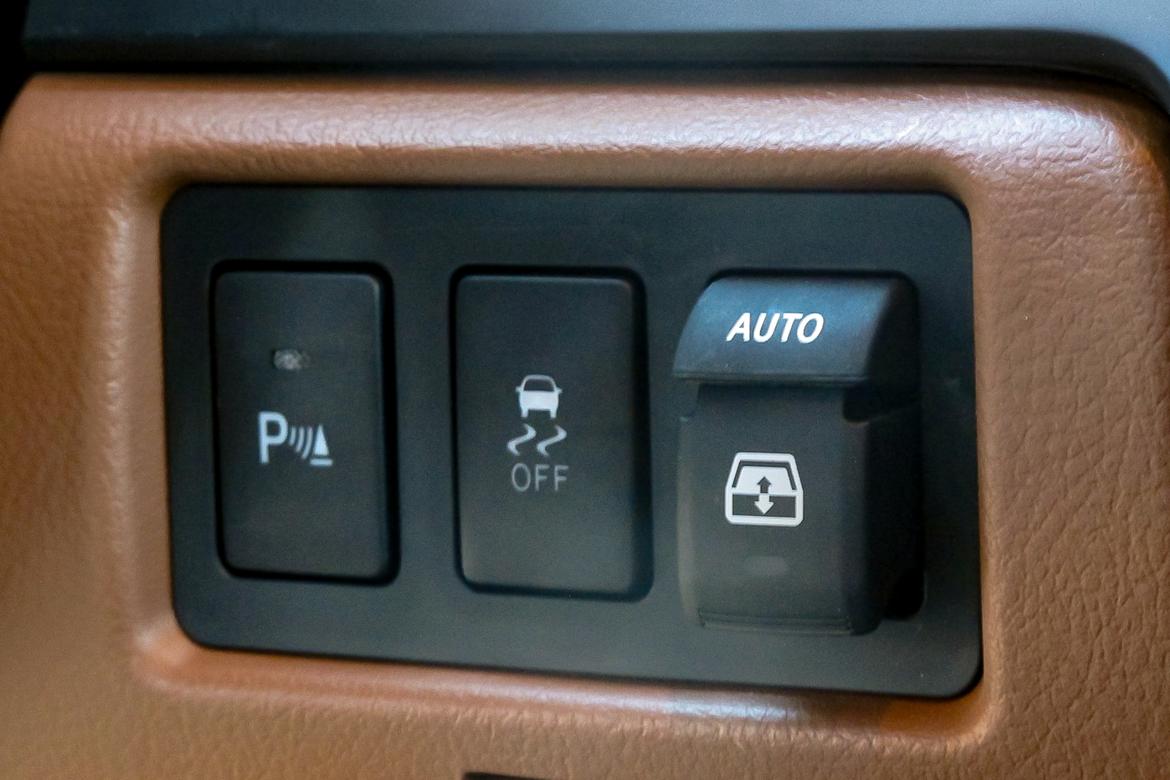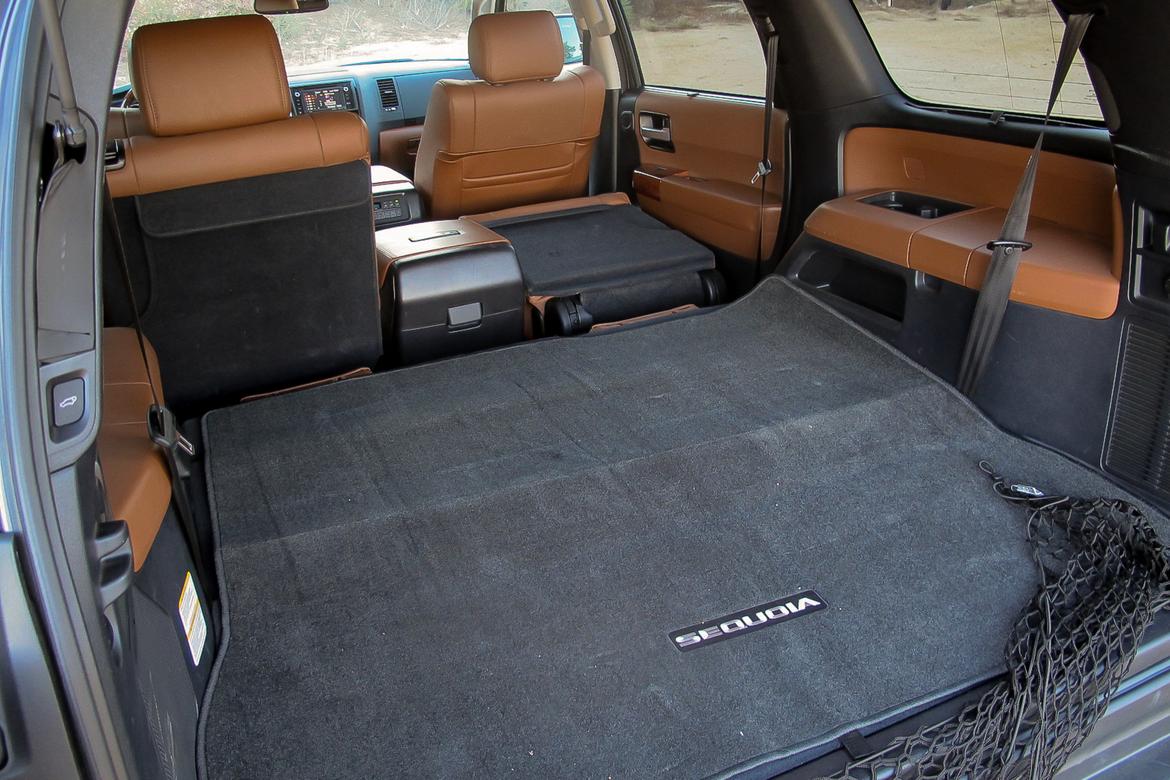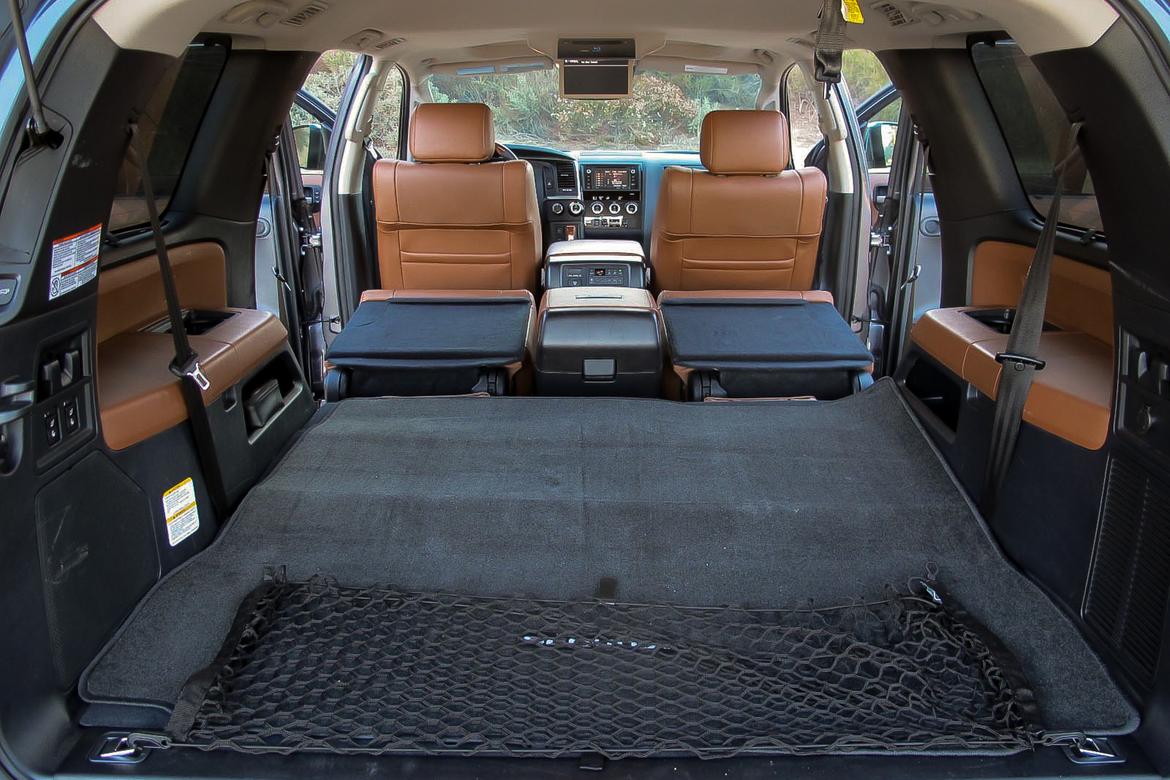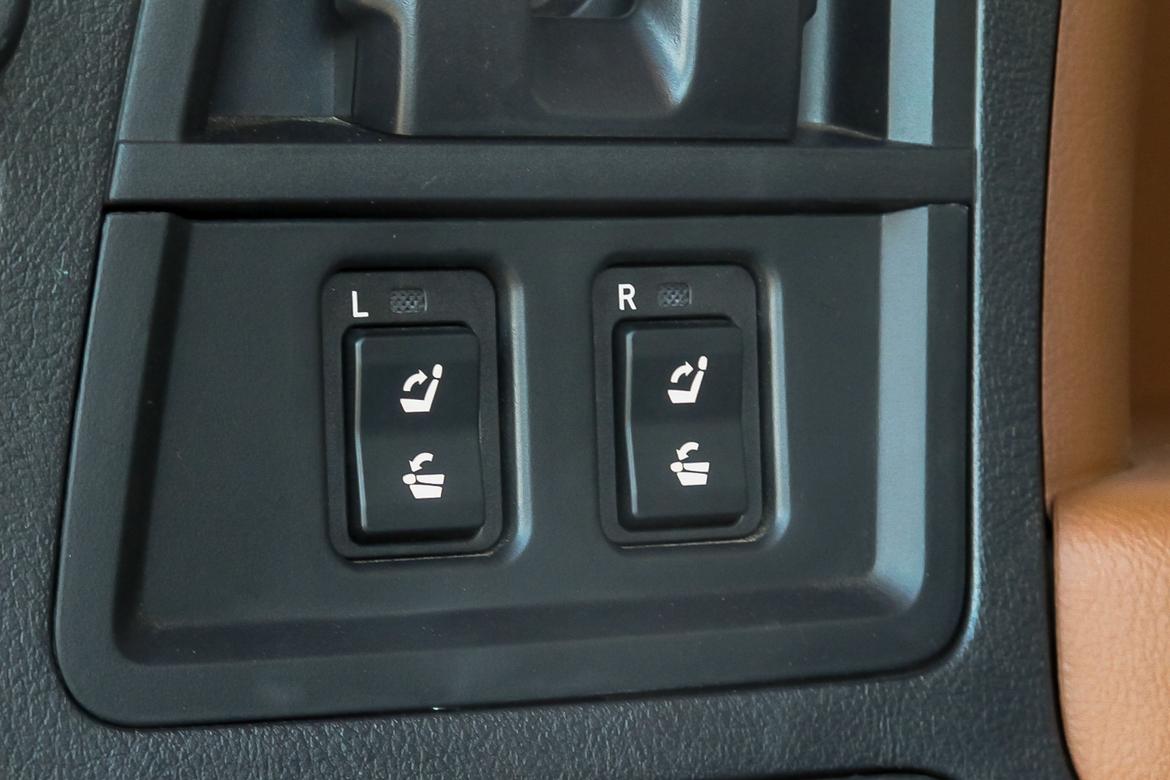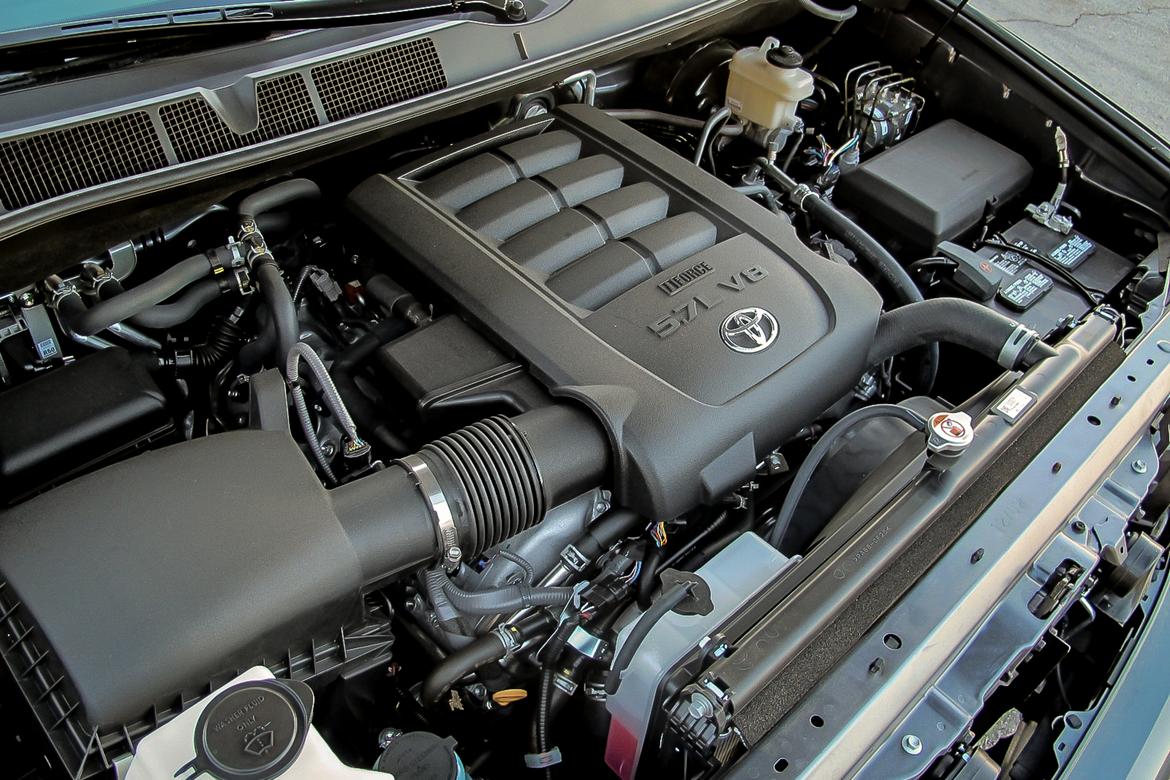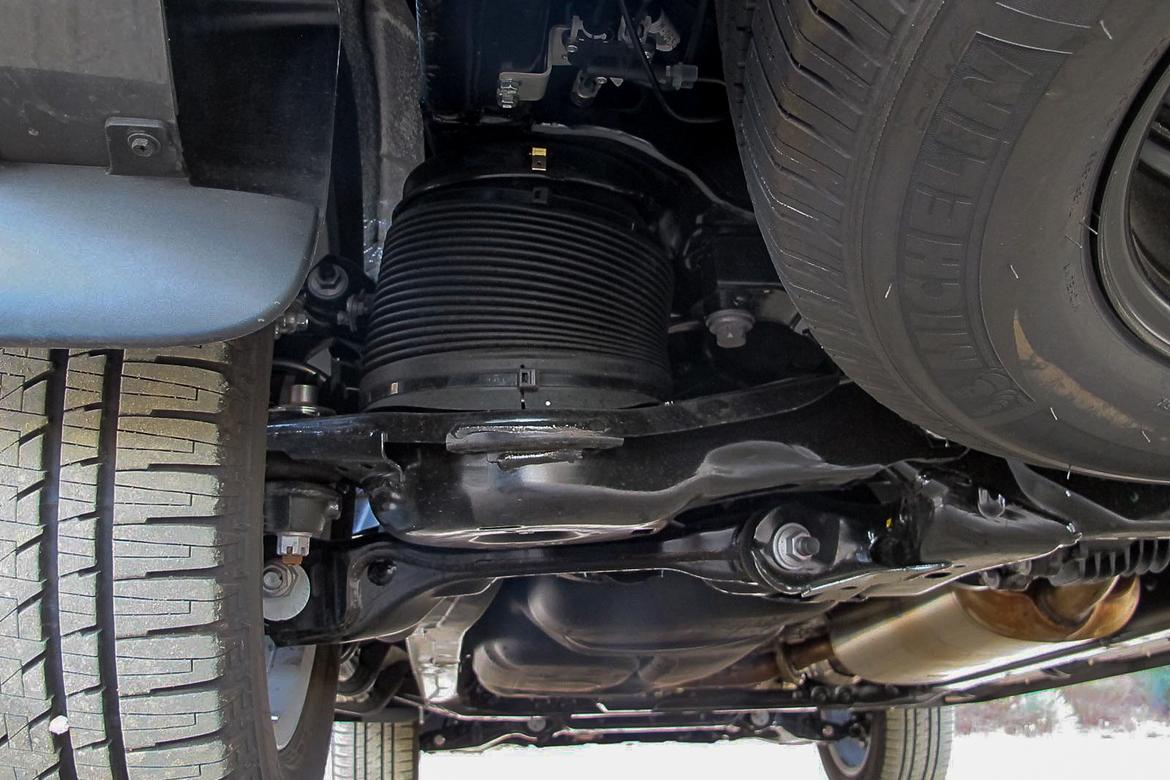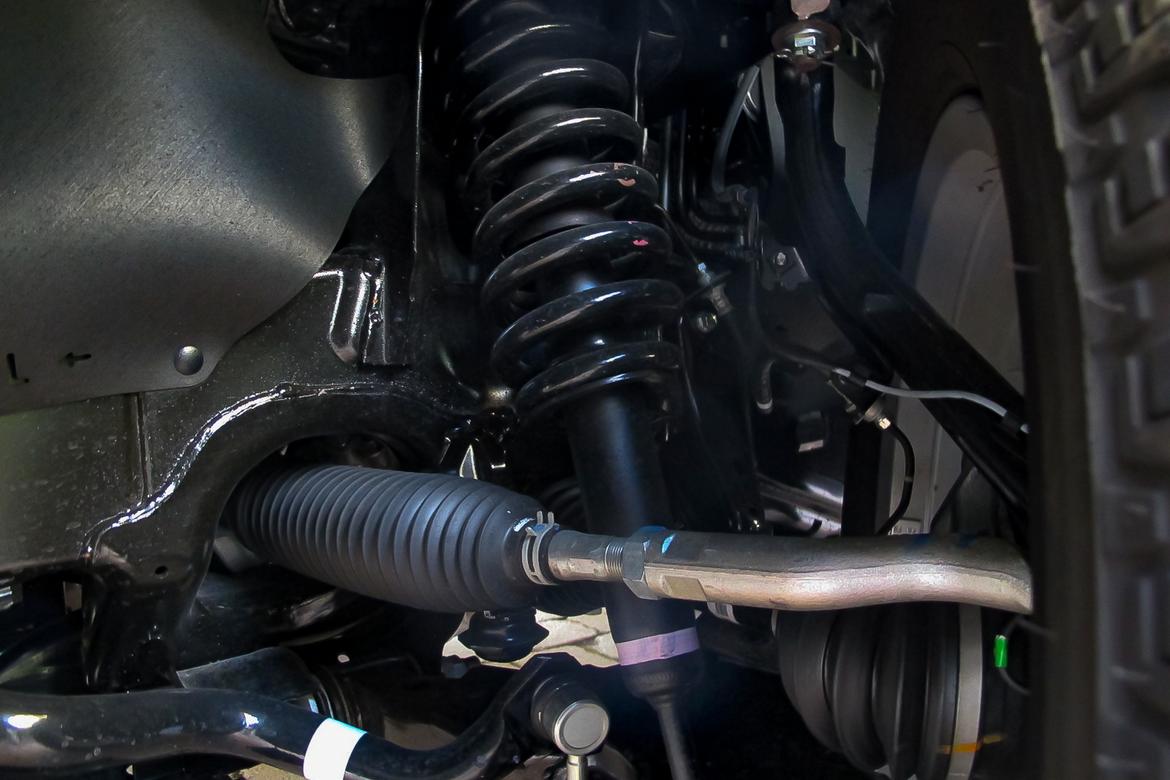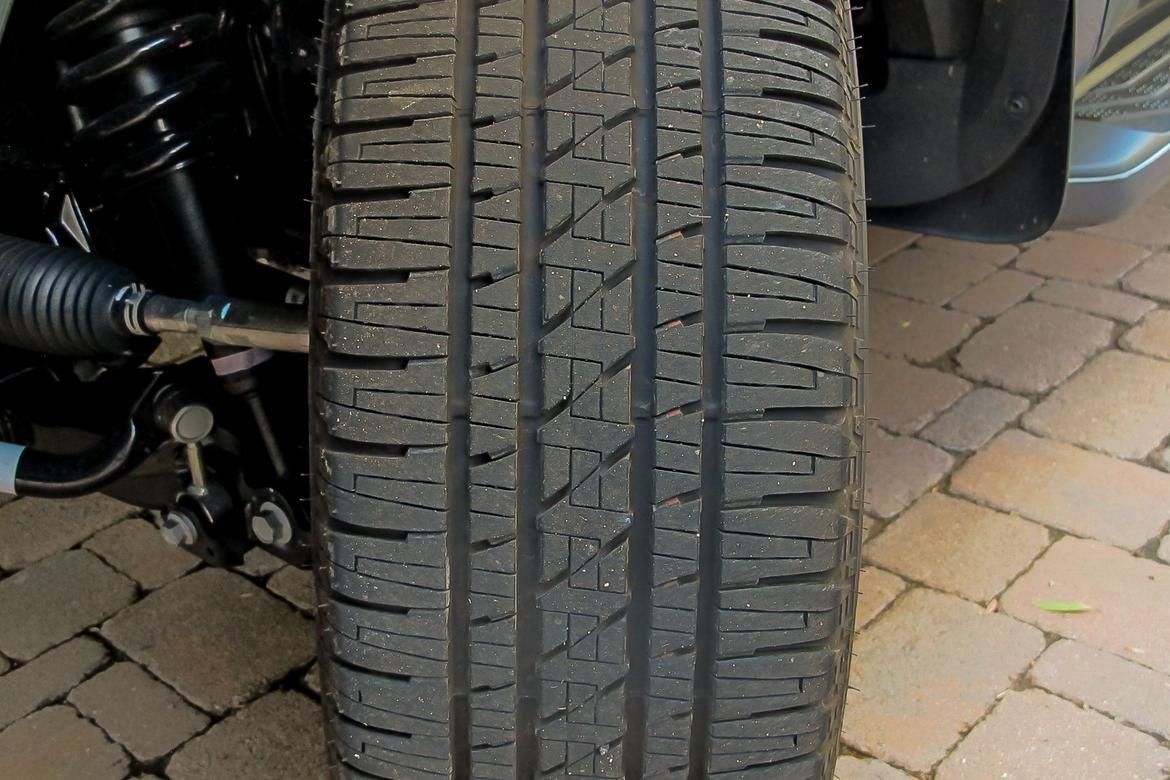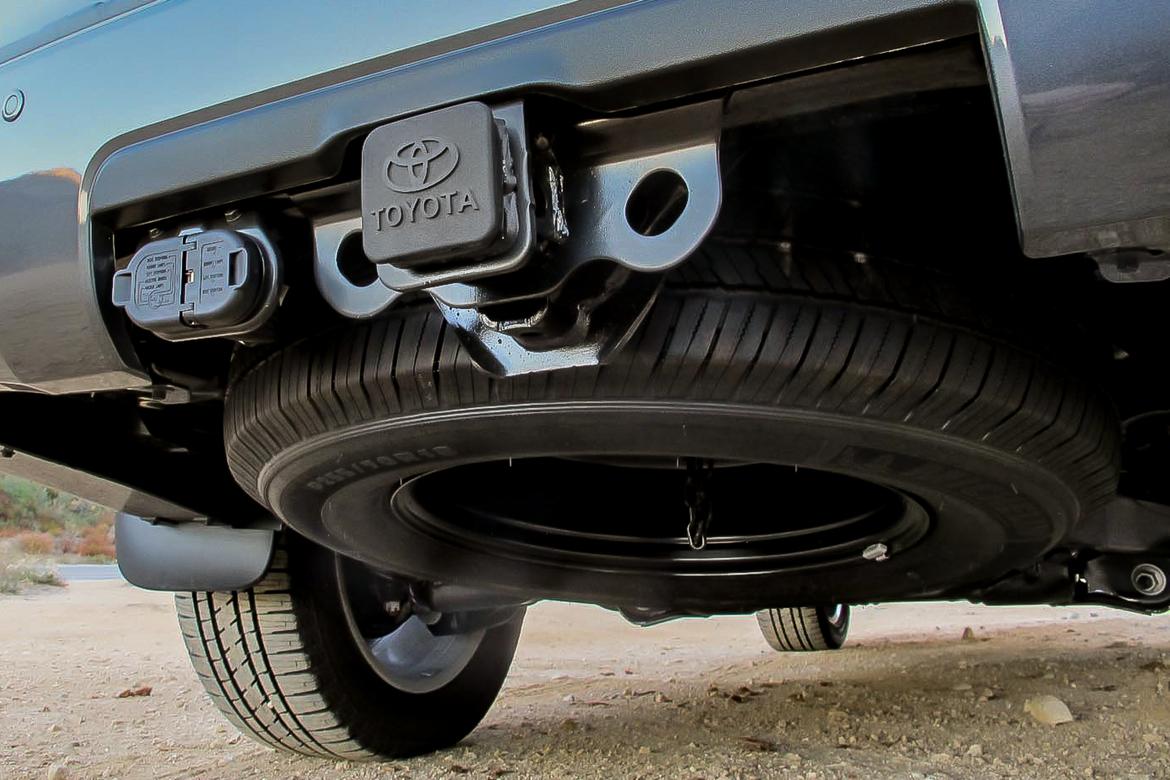The Sequoia offers four unique trim levels — SR5, TRD Sport, Limited and Platinum — with prices for each of the respective base models starting at $49,595, $52,310, $58,090 and $65,305 (all prices include a $1,295 destination fee). As-tested, the 2018 Sequoia Platinum I drove, with a Premium Entune Audio Package, totaled $69,944. I drove it from Los Angeles to Las Vegas and back again, using highway, city and mountain roads on which to base my impressions.
Exterior and Interior Styling
For 2018, the Sequoia has a new four-bar front grille and lower bumper design, with new LED headlights across the lineup. The Sequoia has some interesting proportions, straddling low-profile minivan and school bus. Competitors are moving in one of two directions: rugged (like the Chevrolet Tahoe or Nissan Armada) or more efficient (Ford Expedition). Compare all four here.
Like its direct competitors, the Sequoia uses classic body-on-frame construction, sits up high with its four-wheel independent suspension and has a big nose that can make it look like a bulbous cruise ship from the wrong angle. Its doors are fairly large, which helps when loading small athletes at parks and ball fields. Additionally, it's one of the few SUVs of any class with a powered drop-down rear window, which I find exceptionally useful for moving stale air around the back of a vehicle or for providing an easy pass-through when piling those last few pieces of gear on top of the rear storage area.
Limited and Platinum Sequoias offer a power-folding 60/40-split third-row seat, which accommodates easy reconfigurations for luggage or big-team passenger seating. Second-row seating options include either a 40/20/40-split three-passenger bench (standard on the SR5, optional on the Limited) or two captain's chairs, with or without a separate armrest center console. The console gives second-row passengers their own cargo bin and separate cupholders, but forgoing it provides an easy pass-through to the rear.
Second-row passengers can have access to features such as headphone jacks (when equipped with the ceiling-mounted video screen), climate controls and a 120-volt, two-prong outlet for small-item power needs (100 watts maximum).
With the second- and third-row seats folded flat (providing a huge, flat load area), the Sequoia has an impressive 120.1 cubic feet of cargo space — much better than the Tahoe or Expedition. With the front passenger seat also folded forward, there's almost 11 feet of storage length for those awkward trips back from The Home Depot. For even longer pieces, don't forget the rear window can roll down for the longest lengths of polyvinyl chloride pipe. For more normal loads, there's 66.6 cubic feet of cargo space behind the second row and 18.9 cubic feet behind the third row.
Feels Bulky
From the driver's seat, the vehicle feels large partly because the console and dash are large and spacious with plenty of storage slots, but this also makes it difficult to reach and adjust certain features, like the seat heaters and air-conditioning controls. The overall look is quite dated — angular and broken into sections — compared with competitors, all of which have had at least one redesign and one mid-cycle refresh since the current-generation Sequoia entered the market.
During a midday drive, the angle of the navigation screen and the reflective, polished surfaces on the dash and console resulted in glare that made the screen hard to see. Adjustable interior lighting helped me find just the right amount of brightness to make my nighttime excursions visually comfortable.
The 5.7-liter V-8 gas Used Engine is the same one the Sequoia has used for several years. Rated at 381 horsepower and 401 pounds-feet of torque, the Used Engine has plenty of low-end torque to move the large SUV smoothly around town, but it feels quite sluggish when carrying a full load of cargo or passengers. A gross vehicle weight rating of 7,300 pounds means that fully equipped trim levels (like my Platinum, which weighed 6,260 pounds at a truck scale) will have only about 1,040 pounds of total payload capacity, which doesn't count the driver — meaning it can carry seven people as long as they average 145 pounds and no one has any luggage. Towing capacity on my tow-package-equipped Platinum 4x4 was 7,000 pounds, with 4x2 models ranging from 7,400 (SR5 and TRD Sport 4x2) to 7,200 pounds (Limited 4x2). Both the cargo and towing capacity for the Sequoia are definitely on the lower end of the segment's work-duty spectrum.
On the Road
My Platinum model came standard with an electronically modulated, load-leveling rear air suspension that keeps the vehicle level no matter what extra weight is inside or what kind of trailer is on the hitch (if so equipped). Additionally, the Platinum comes standard with a pretty cool suspension adjustment switch that allows the driver to select between Sport, Normal and Comfort settings. Each setting electronically adjusts the firmness and responsiveness of the shock absorbers. Unlike many of these systems, the Sequoia's settings were well-differentiated: Sport mode is firm, while Comfort is quite marshmallowy and good only for straight highway driving.
During my 400-mile drive to Las Vegas, I found Comfort to be quite smooth and floaty. Then, while running through the mountains outside of Los Angeles, Sport mode firmed up the hulking SUV's cornering abilities to the point of surprise, giving me a newfound appreciation for the Sequoia's ability bandwidth. I would note, however, that it would be nice if the steering were also variable; overall, steering was just adequate.
The Sequoia's Multi-Mode four-wheel drive is relatively simple, with a full-time all-wheel-drive mode for use on all surfaces. A lockable transfer case provides a low-range gear, allowing the vehicle to better navigate steep and rocky off-road terrain or slippery boat ramps. A locking center differential can be activated in both high (less than 35 mph) and low ranges for a hard 50/50 power split between the front and rear axles; brake-based traction control is used to limit individual wheel slip. All Sequoias have push-button Tow-Haul modes, while my Platinum version also included a rear suspension height button to make ingress and egress easier for passengers.
During my drive time, I averaged 16.8 mpg, which I figured was good considering the Sequoia's EPA-estimated mileage of 13/17/14 mpg city/highway/combined. With rear-wheel drive, the Sequoia's combined rating is 15 mpg, though the city and highway figures don't change (a result of unrounded numbers used for the calculations). All the Sequoia's competitors have versions that deliver much better fuel economy, and some of them have two Used Engine choices.
The Toyota's low fuel economy and pessimistic fuel gauge had me looking for gas stations with 300 miles left on the trip odometer; in the end, I think I had 10 gallons of fuel left in the 26-gallon tank when the gauge ran below the quarter-tank mark. A larger optional gas tank or more accurate fuel gauge would be nice upgrades for the next generation.
Still, the Sequoia offers a decent growl and does, surprisingly, have a sporty side if you want to push it to those limits. For those wanting a sportier full-size SUV, Toyota is offering a new-for-2018 Sequoia TRD Sport package, which offers high-performance Bilstein shocks, stronger and firmer front and rear sway bars, and street-performance-optimized 20-inch wheels and tires. The TRD Sport slots in between the SR5 and Limited trims, and it delivers a sportier look with blackout badging and TRD accenting on the shift knob, floormats and doorsills. Black cloth is standard on the TRD Sport, while seven-seat black leather is an option.
Safety Upgrades
Neither the Insurance Institute for Highway Safety nor the National Highway Traffic Safety Administration has crash-tested the current-generation Sequoia, but NHTSA awarded it four out of five stars for rollover resistance.
Rear visibility is quite good, with large side windows and headrests in both the second and third rows that collapse to allow for an unobstructed rear view. A good quality backup camera is standard on all Sequoias, and a larger video screen comes with the optional premium audio system.
Also new for 2018, Toyota has updated and upgraded the Sequoia's standard safety and security features, now called Toyota Safety Sense-P, which includes automatic smart-stop technology with brake override, dual-stage airbags, seat-mounted side airbags and roll-sensing head airbags for all three rows of the vehicle. Finally — and standard on Platinum models — the Sequoia offers blind spot monitoring, rear cross-traffic alert, precollision warning, lane departure warning, adaptive cruise control and automatic high-beam headlights.
In the Market
Although the Sequoia offers some characteristics important to full-size SUV buyers (number of seats, a V-8 and more than 7,000 pounds of towing capacity), there are a few places where the Sequoia falls short (interior design and fuel economy). Overall ride quality, even in a Platinum with adaptive shocks and a sophisticated load-leveling rear air suspension system, is still shy of the segment stalwart Chevy Tahoe or the all-new Ford Expedition. And considering that the Sequoia has not benefitted from any significant chassis changes in almost a decade, it's long overdue for more than just a refresh to better compete in its class.
We're guessing a new Sequoia is still a few years away, because the all-new Toyota Tundra is reportedly coming in 2019 — conventional wisdom suggests the next Sequoia will come shortly after that — so we won't hold our breath. No doubt there's value to be had with the 2018, but the compromises you'll have to make are likely to frustrate.
's Editorial department is your source for automotive news and reviews. In line with 's long-standing ethics policy, editors and reviewers don't accept gifts or free trips from automakers. The Editorial department is independent of 's advertising, sales and sponsored content departments.



